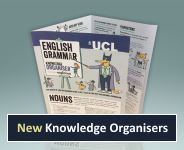Glossary: sentence
Explanation
The sentence is the largest unit of grammar, which in the written language begins with a capital letter and ends with a full stop.A sentence is a group of words which are grammatically connected to each other but not to any words outside the sentence.
The form of a sentence’s main clause shows whether it is being used as a statement, a question, a command or an exclamation.
A sentence may consist of a single clause or it may contain several clauses held together by subordination or co-ordination. Classifying a sentence as a simple sentence, complex sentence or compound sentence can be confusing, because a ‘simple’ sentence may be complicated, and a ‘complex’ one may be straightforward. The terms single-clause sentence and multi-clause sentence may be more helpful.
- John went to his friend’s house. He stayed there till tea-time.
- John went to his friend’s house, he stayed there till tea-time. [comma splice]
- This is a ‘comma splice’, a common error in which a comma is used where either a full stop or a semi-colon is needed to indicate the lack of any grammatical connection between the two clauses.
- You are my friend. [statement]
- Are you my friend? [question]
- Be my friend! [command]
- What a good friend you are! [exclamation]
- Ali went home on his bike to his goldfish and his current library book about pets. [single-clause sentence]
- She went shopping but took back everything she had bought because she didn’t like any of it. [multi-clause sentence]
See also clause type, command, exclamation, question, statement.
Englicious contains many resources for English language in schools, but the vast majority of them require you to register and log in first. For more information, see What is Englicious?

